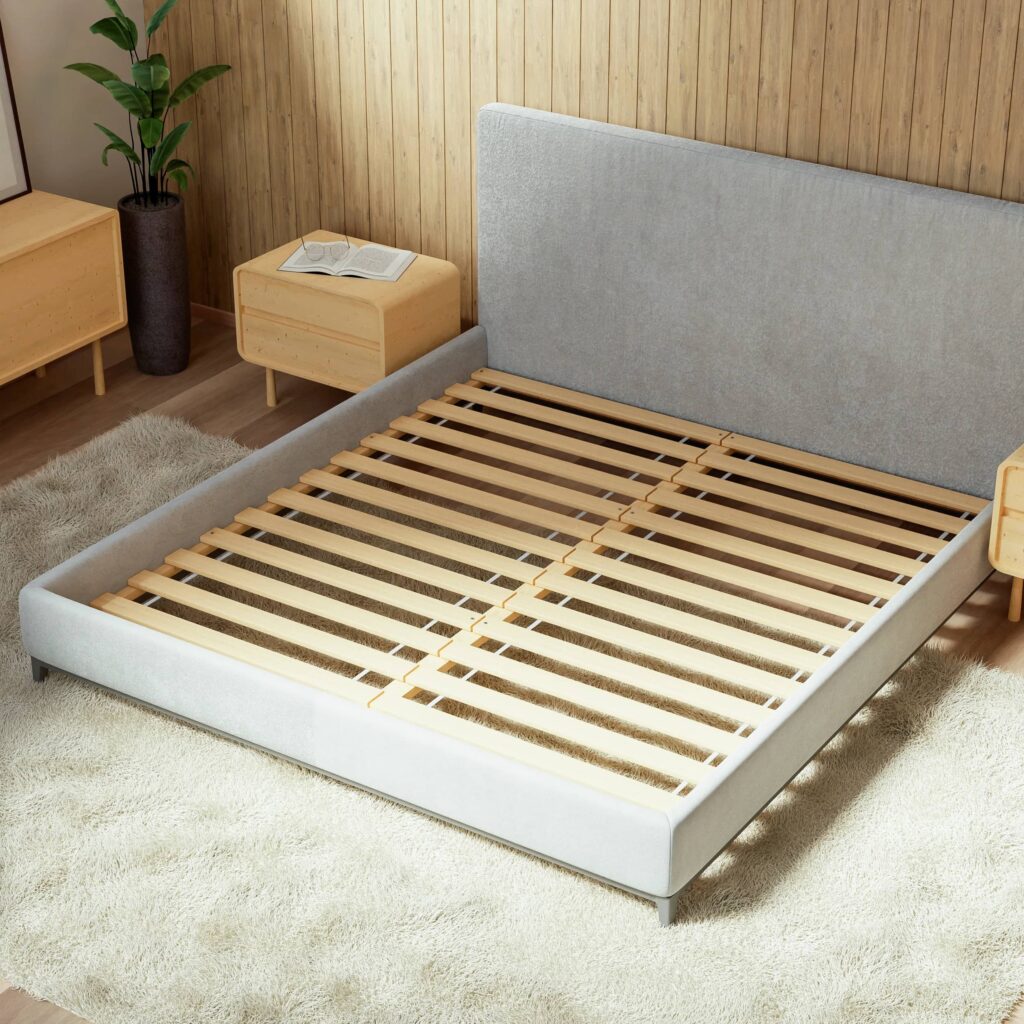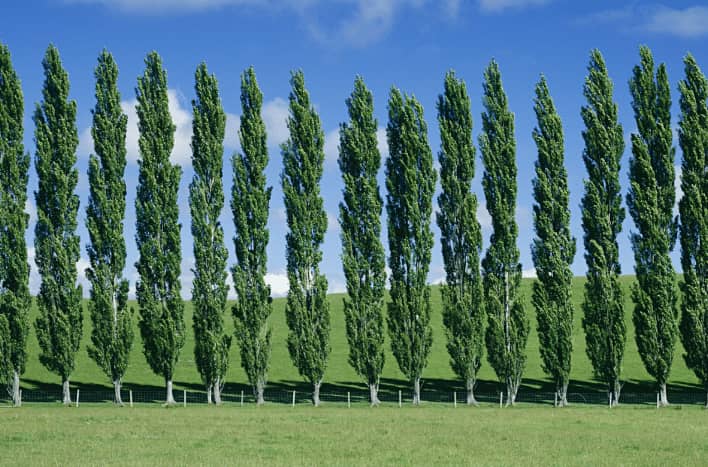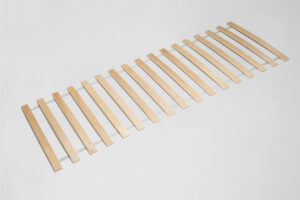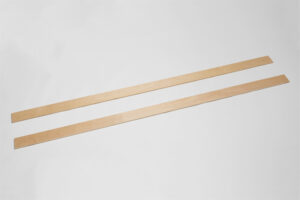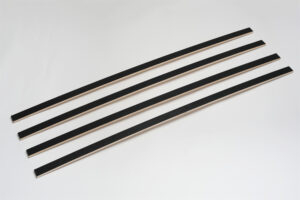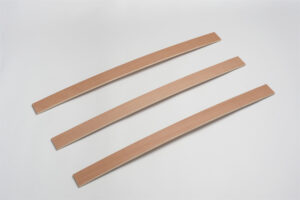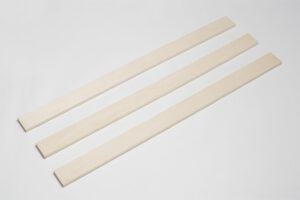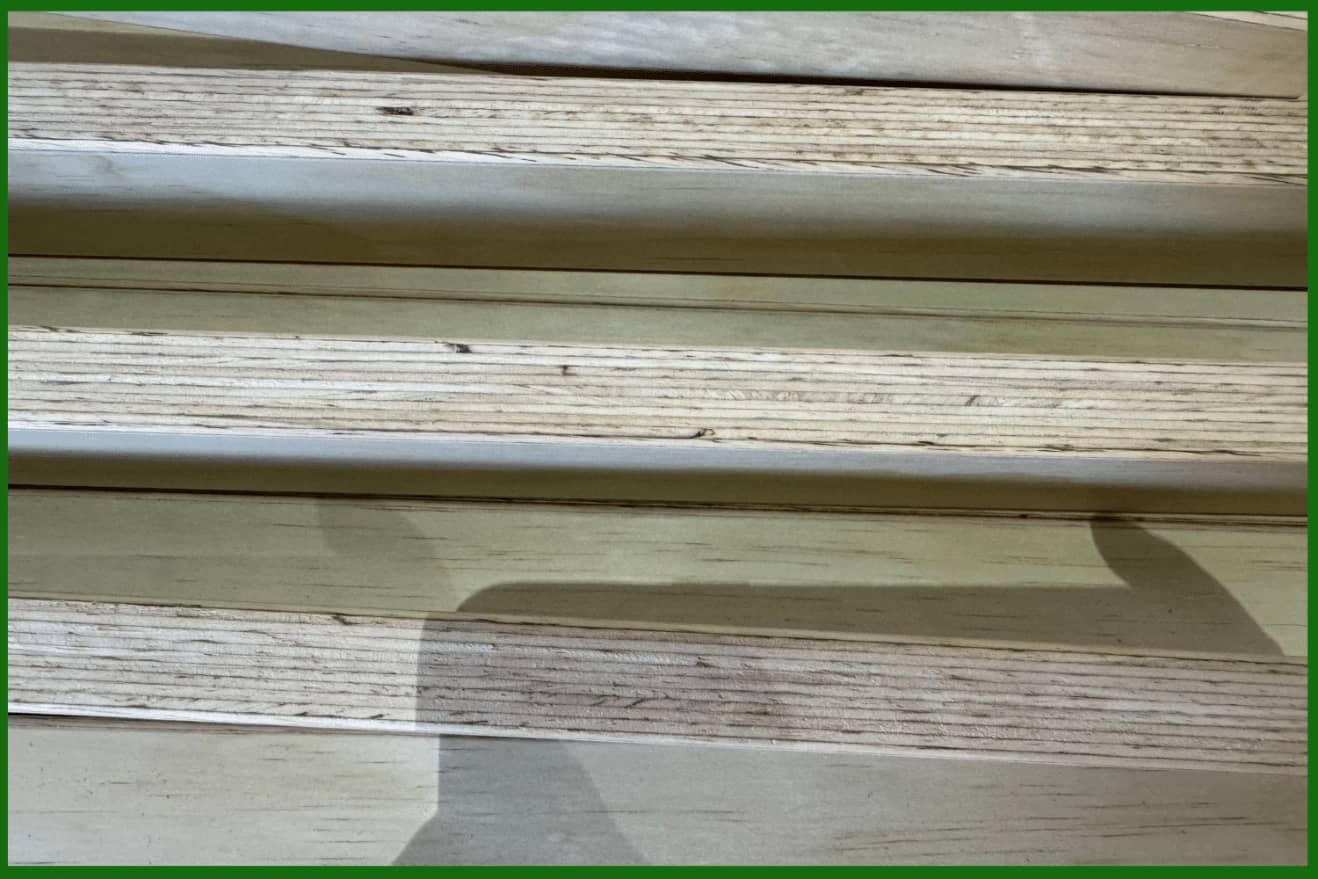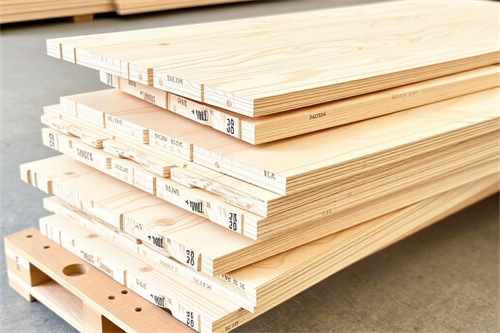In the fiercely competitive bedding industry, standing out from the crowd and captivating discerning consumers requires a strategic blend of quality, affordability, and sustainability. This is where poplar bed slats emerge as a game-changer – a rising star in the realm of bed frames and foundations, poised to redefine comfort and value for manufacturers and sleep enthusiasts alike.
But what exactly makes poplar bed slats so special? And why should B2B businesses sit up and take notice? This comprehensive guide delves deep into the world of poplar bed slats, exploring their unique advantages, versatile applications, and why they’re rapidly becoming a favorite choice for those seeking a winning combination of quality, affordability, and eco-consciousness.
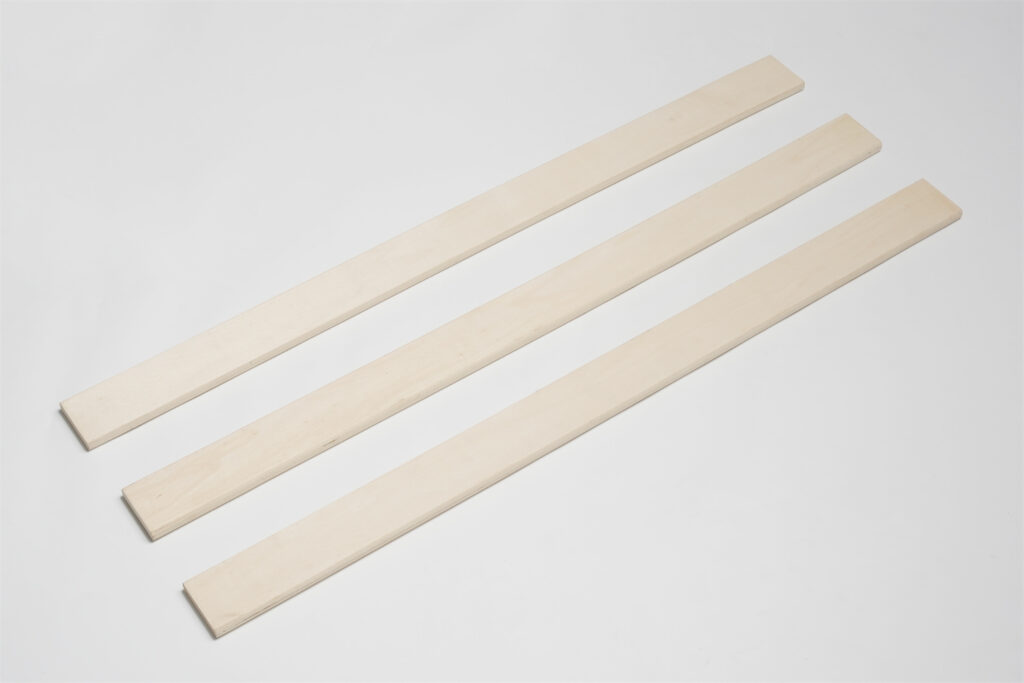
Poplar Power: Unveiling the Appeal of This Versatile Hardwood
Before we dive into the specifics of bed slats, let’s take a closer look at what makes poplar wood such a compelling and sought-after material in the world of bedding, particularly in the context of today’s discerning consumer:
- Lightweight Strength: A Winning Combination: Poplar wood possesses a remarkable duality – it’s incredibly lightweight yet surprisingly strong and durable. This unique characteristic makes it exceptionally well-suited for bed slats, which need to support significant weight without adding unnecessary bulk or heaviness to the bed frame. This is particularly important for consumers who value ease of assembly, maneuverability, or those living in spaces where weight restrictions might be a concern, such as studio apartments or multi-story homes.
- Resistance to Warping and Cracking: Ensuring Long-Lasting Performance: Poplar is renowned for its dimensional stability, meaning it exhibits exceptional resistance to warping, cracking, or twisting over time, even when exposed to fluctuating humidity levels. This inherent stability ensures long-lasting performance and minimizes the likelihood of annoying squeaks, creaks, or structural issues that can arise with other wood types. This translates to enhanced customer satisfaction and reduced chances of returns or complaints, ultimately contributing to a more positive brand experience.
- Smooth Finish and Easy Workability: A Dream for Manufacturers and Consumers: Poplar wood boasts a naturally fine, even texture that readily accepts paint, stain, and various finishes, making it incredibly versatile for achieving a polished and consistent look across diverse bed frame styles and aesthetics. This ease of workability is a boon for manufacturers, allowing for efficient production processes and a wider range of design possibilities. For consumers, it translates to a beautiful, smooth, and visually appealing bed frame that complements their bedroom décor, whether their style leans towards minimalist chic, rustic charm, or anything in between.
- Sustainable and Eco-Conscious Choice: Aligning with Consumer Values: In an era where sustainability is paramount, poplar shines as a responsible choice. As a fast-growing hardwood species, poplar is a renewable and environmentally friendly option, requiring minimal resources and leaving a smaller environmental footprint compared to slower-growing alternatives. Offering poplar bed slats allows your business to align with the values of eco-conscious consumers who prioritize sustainability without compromising on quality or aesthetics. This alignment with eco-consciousness can be a powerful differentiator in a market where consumers are increasingly making purchasing decisions based on a brand’s environmental and social responsibility.
5 Compelling Reasons Poplar Bed Slats Are Gaining Momentum:
Now that we’ve explored the inherent qualities of poplar wood, let’s delve into the specific advantages of poplar bed slats and why they’re rapidly gaining traction in the bedding industry, particularly for B2B businesses looking to gain a competitive edge:
- Exceptional Value for Money: Appealing to Budget-Conscious Consumers: In today’s market, where consumers are increasingly value-driven, poplar bed slats stand out as a winning choice. Poplar wood offers an impressive combination of quality and affordability, allowing manufacturers to create durable and supportive bed frames without compromising on profit margins or passing on exorbitant costs to customers. This balance of quality and affordability is crucial for appealing to a wider customer base, especially those seeking the best possible value for their investment, such as young adults furnishing their first apartments, families on a budget, or individuals looking for quality without breaking the bank.
- Lightweight Design for Easy Handling: Simplifying Logistics and User Experience: The lightweight nature of poplar wood translates to significant advantages throughout the supply chain and for the end-user. For manufacturers and retailers, it means reduced shipping costs, simplified logistics, and easier handling during warehousing and transportation. For consumers, it translates to a more user-friendly experience, particularly during assembly, disassembly, or when moving the bed frame. This ease of handling is especially beneficial for those who live in apartments, frequently relocate, or prefer to avoid heavy lifting, such as older adults, individuals with mobility limitations, or those who appreciate hassle-free furniture assembly.
- Durability That Stands the Test of Time: Ensuring Customer Satisfaction and Longevity: While poplar is remarkably lightweight, don’t let that fool you – it’s surprisingly strong and possesses excellent resistance to warping, cracking, and sagging, even under regular use and pressure. This inherent durability ensures long-lasting performance and minimizes the likelihood of returns, complaints, or the need for premature replacements. This longevity translates to enhanced customer satisfaction and reinforces the value proposition of poplar bed slats, making them a smart investment for both retailers and consumers seeking long-term value.
- Versatility for Diverse Design Aesthetics: Catering to a Wide Range of Styles: Poplar’s smooth, even texture and its ability to readily accept various finishes make it incredibly versatile from a design perspective. Whether you’re crafting sleek and modern bed frames with clean lines and minimalist aesthetics, or rustic and traditional designs with intricate details and warm, inviting finishes, poplar seamlessly blends in and enhances the overall visual appeal. This adaptability makes poplar bed slats suitable for a wide range of target markets and design preferences, allowing you to cater to diverse customer needs, from minimalist studios to cozy, traditional bedrooms.
- Meeting the Demand for Sustainable Solutions: Aligning Your Brand with Eco-Consciousness: In a world increasingly aware of the environmental impact of consumer choices, offering products made from sustainable materials like poplar wood is no longer optional – it’s essential. By choosing poplar, you showcase your commitment to ethical sourcing, responsible forestry practices, and reducing your environmental footprint. This resonates strongly with the growing segment of eco-conscious consumers who actively seek out brands and products that align with their values, giving you a competitive edge and enhancing your brand image. This is particularly relevant for businesses targeting millennial and Gen Z consumers, who are known for their strong environmental consciousness and willingness to support brands that share their values.
Poplar Bed Slats: Applications Across the Bedding Landscape
The versatility, affordability, and impressive strength-to-weight ratio of poplar bed slats make them suitable for a wide range of applications within the bedding industry, catering to diverse needs and preferences:
- Standard Bed Frames: A Reliable and Cost-Effective Foundation: Poplar slats are an excellent choice for standard bed frames of all sizes, from twin and full to queen and king. They provide reliable support for various mattress types, including memory foam, latex, innerspring, and hybrid mattresses, making them a versatile and cost-effective option for manufacturers catering to a broad customer base. Their affordability makes them particularly appealing for entry-level bed frames and those targeting budget-conscious consumers, while their durability ensures they can withstand years of use.
- Platform Beds: Providing Sturdy Support with a Minimalist Aesthetic: Platform beds, known for their minimalist design and sturdy support system, often utilize poplar slats as their foundation. Poplar’s strength-to-weight ratio is ideal for supporting mattresses directly without the need for a box spring, appealing to consumers seeking a clean, modern aesthetic or those looking to maximize under-bed storage space. This makes them a popular choice for contemporary bedrooms, smaller spaces where maximizing floor area is key, and for individuals who prefer a clutter-free aesthetic.
- Bunk Beds: Prioritizing Safety and Stability with Lightweight Design: When it comes to bunk beds, safety and stability are paramount. Poplar’s lightweight nature makes it an excellent choice for bunk beds, as it minimizes the overall weight of the structure, reducing stress on the frame and enhancing stability. This is particularly important for children’s bunk beds, where safety is a top concern for parents. The lighter weight also makes bunk bed assembly and disassembly easier for parents, especially if the bed needs to be moved or reconfigured as children grow.
- Daybeds and Sofa Beds: Meeting the Demands of Multi-Functionality: Poplar’s versatility extends to multi-functional furniture pieces like daybeds and sofa beds. Its strength and lightweight design make it well-suited for these applications, where the frame needs to support both sitting and sleeping arrangements without being overly bulky or difficult to maneuver. The affordability of poplar also makes it a cost-effective choice for manufacturers producing these types of furniture, allowing them to offer competitive prices to consumers seeking versatile and stylish furniture solutions for smaller spaces or guest rooms.
- Adjustable Bed Frames: Catering to Specific Comfort and Support Needs: While not as common as other applications, poplar can be used in adjustable bed frames, particularly for those seeking a more lightweight and affordable option. The key is to ensure the slat thickness and spacing are appropriate for the weight capacity and adjustment mechanisms of the frame. Poplar’s strength-to-weight ratio can be advantageous in this application, as it can contribute to a more responsive and easier-to-adjust bed frame, particularly for individuals with mobility limitations or those seeking customizable comfort options.
Selecting the Right Poplar Bed Slats: Key Considerations
Choosing the right poplar bed slats for your product line or projects involves careful consideration of several key factors to ensure you’re meeting the specific needs of your target market and desired product specifications:
- Slat Thickness and Width: Determining Support and Feel: Thicker and wider slats generally offer greater support and a firmer feel, while thinner slats are suitable for lighter mattresses, individuals, or those who prefer a bit more “give” in their sleep surface. Consider the intended weight capacity, mattress type, and desired feel when selecting slat dimensions. For example, a thicker slat (1″ or more) might be ideal for a king-size mattress designed for two individuals, while a thinner slat (3/4″ or less) might be suitable for a twin bed frame intended for a child or teenager.
- Slat Spacing: Balancing Support and Ventilation: The spacing between slats influences both mattress support and breathability. Closer spacing (2″-3″ apart) provides firmer support, ideal for heavier mattresses or individuals who prefer a less bouncy feel. Wider spacing (3″-4″ apart) enhances ventilation, allowing for better airflow beneath the mattress, which is beneficial for those concerned about heat retention, living in humid climates, or seeking to create a fresher sleep environment. The ideal spacing often depends on a combination of factors, including mattress type, individual preferences, and climate considerations.
- Slat Quantity: Influencing Weight Distribution and Support: The number of slats used in a bed frame directly impacts its overall support and weight distribution capabilities. More slats generally equate to better support, especially for heavier mattresses or individuals. A good rule of thumb is to aim for at least 14-16 slats for a standard twin bed and proportionally more for larger sizes. Offering bed frames with a higher slat count than the standard can be a selling point, conveying a sense of quality and enhanced support, which can be particularly appealing to consumers seeking durability and longevity in their bedding investments.
- Finish Options: Balancing Aesthetics and Durability: Poplar bed slats can be left unfinished for a natural, raw look, or finished with paint, stain, or lacquer for added durability, moisture resistance, and aesthetic appeal. Choose a finish that aligns with your desired style, target market, and performance requirements. Natural finishes tend to showcase the wood’s inherent beauty and appeal to those seeking a more organic or minimalist aesthetic, while painted or stained finishes offer greater design versatility and protection, making them suitable for a wider range of styles and preferences.
Poplar vs. Other Bed Slat Materials: A Head-to-Head Comparison
When choosing the ideal bed slat material for your products, a comprehensive comparison is key. Let’s pit poplar against other popular options – birch, pine, and metal – to see how they stack up across crucial factors:
A Detailed Look at the Contenders:
Poplar:
- Weight: Lightweight, making it easy to handle and maneuver, a significant advantage during assembly and transportation.
- Strength: Offers a good balance of strength and flexibility, providing reliable support for most mattress types and sleepers.
- Durability: Highly durable and resistant to warping, cracking, and sagging, ensuring long-lasting performance.
- Cost: Very affordable, allowing for competitive pricing and appealing to budget-conscious consumers.
- Sustainability: Highly sustainable due to its fast growth rate and renewable nature.
- Aesthetics: Versatile and readily accepts various finishes, blending seamlessly with diverse bed frame styles.
Birch:
- Weight: Lightweight, similar to poplar, making it easy to work with and transport.
- Strength: Known for its exceptional strength and ability to withstand heavy loads.
- Durability: Highly durable and resistant to wear and tear, making it a long-lasting option.
- Cost: More expensive than poplar, often used in higher-end bed frames.
- Sustainability: Generally sustainable, but slower growth rate compared to poplar.
- Aesthetics: prized for its attractive, light-colored grain pattern, often left unfinished or with clear finishes to showcase its natural beauty.
Pine:
- Weight: Medium weight, heavier than poplar or birch.
- Strength: Moderately strong, suitable for standard bed frames and lighter mattresses.
- Durability: Less durable compared to poplar or birch, more prone to dents, scratches, and potential sagging over time.
- Cost: Very affordable, often used in budget-friendly bed frames.
- Sustainability: Sustainability varies depending on sourcing practices, generally considered a renewable resource.
- Aesthetics: Known for its knotty, rustic appearance, often used in traditional or farmhouse-style bed frames.
Metal:
- Weight: Heavy, can make transportation and assembly more challenging.
- Strength: Exceptionally strong and durable, capable of supporting very heavy loads.
- Durability: Highly resistant to wear and tear, moisture, and pests, making it a long-lasting option.
- Cost: More expensive than wood options, often used in heavy-duty or adjustable bed frames.
- Sustainability: Sustainability varies greatly depending on the type of metal and manufacturing processes.
- Aesthetics: Offers a modern, industrial look, often used in platform beds or contemporary designs.
Bed Slat Material Comparison Table:
| Feature | Poplar | Birch | Pine | Metal |
|---|---|---|---|---|
| Weight | Lightweight | Light | Medium | Heavy |
| Strength | Medium | High | Medium | High |
| Durability | High | Very High | Medium | Very High |
| Cost | Affordable | Moderate | Affordable | Expensive |
| Sustainability | High | High | Medium | Varies |
| Aesthetics | Versatile, takes finishes well | Light, natural grain | Knotty, rustic look | Industrial, modern |
This table provides a concise overview of the key differences between poplar and other bed slat materials. By carefully considering these factors, you can select the material that best aligns with your desired product specifications, target market, and budget.
Why Choose Yuantuo Wood for Your Poplar Bed Slats?
You understand the advantages of poplar bed slats – their strength, sustainability, and affordability make them a smart choice. But choosing the right supplier is just as crucial as choosing the right material. That’s where Yuantuo Wood comes in. We don’t just provide poplar bed slats; we provide peace of mind, knowing you’re getting the highest quality products, backed by a commitment to excellence:
- Uncompromising Quality for Lasting Performance: Our poplar bed slats undergo rigorous testing at every stage, from sourcing the finest timber to the final product. We adhere to strict quality control measures, ensuring each slat meets the highest standards for strength, durability, and dimensional stability. With Yuantuo Wood, you can be confident that your bed frames will stand the test of time, providing reliable support and lasting satisfaction for your customers.
- Precision Manufacturing for Seamless Integration: We utilize advanced manufacturing techniques and precision machinery to craft poplar bed slats to your exact specifications. Whether you require specific dimensions, finishes, or slat quantities, we deliver consistent quality and precise craftsmanship, ensuring seamless integration into your bed frame designs. Our commitment to precision translates to easier assembly, reduced production headaches, and a superior finished product.
- Responsibly Sourced for Sustainable Solutions: We understand the importance of environmental responsibility. That’s why we source our poplar wood from sustainably managed forests, ensuring responsible forestry practices and minimizing our ecological footprint. By choosing Yuantuo Wood, you’re not just choosing quality, you’re choosing a partner committed to sustainable practices and preserving our planet’s resources.
- Dedicated to Your Success: Partnership Beyond Products: At Yuantuo Wood, we’re more than just a supplier – we’re your partner in success. Our dedicated team is committed to providing exceptional customer service, reliable delivery, and ongoing support to help your business thrive. We believe in building lasting relationships based on trust, transparency, and a shared commitment to excellence.
If you want to know more information about more kinds of bed boards, you can’t miss the following blogs:
